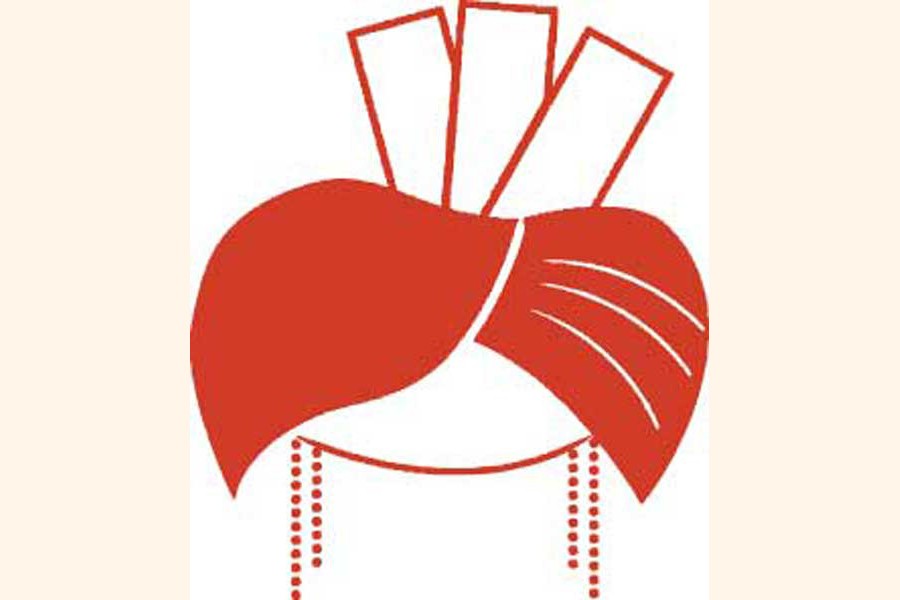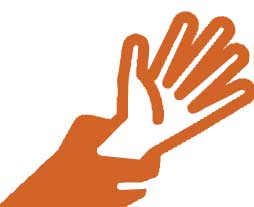
Social resistance to pervasive menaces
Shihab Sarkar | Sunday, 24 November 2019

 The memories of many may have waned --- especially those of the scourge of acid attacks on young women which once drove the rural Bangladesh to the edge. The situation eventually reached a dreadful level. In terms of panic and worries, the situation became so fraught that women and teenage girls had to reduce the frequency of coming out of home. But precautions like this also could not take them out of the harm's way. The thugs were found throwing lethal acid on the women through the windows in the darkness of night. Some got injured with burn while deep asleep, or when students were engrossed in studies beside windows. In the height of the attacks, a number of young women received grave injuries, some later turning fatal. Others became physically crippled and incapable of leading a normal life. Under the support of timely, but prolonged, treatment many of them could go home --- with faces and other limbs mutilated. In fact, most of the acid attack victims had to go through series of ordeals denying them a meaningful survival. As a normal consequence deep-seated hopelessness began eating away at their vitals.
The memories of many may have waned --- especially those of the scourge of acid attacks on young women which once drove the rural Bangladesh to the edge. The situation eventually reached a dreadful level. In terms of panic and worries, the situation became so fraught that women and teenage girls had to reduce the frequency of coming out of home. But precautions like this also could not take them out of the harm's way. The thugs were found throwing lethal acid on the women through the windows in the darkness of night. Some got injured with burn while deep asleep, or when students were engrossed in studies beside windows. In the height of the attacks, a number of young women received grave injuries, some later turning fatal. Others became physically crippled and incapable of leading a normal life. Under the support of timely, but prolonged, treatment many of them could go home --- with faces and other limbs mutilated. In fact, most of the acid attack victims had to go through series of ordeals denying them a meaningful survival. As a normal consequence deep-seated hopelessness began eating away at their vitals.
The scourge had begun haunting the country since the mid-1980s and reached an alarming height in the 1990s. The monster of acid throwing at one point of time became so ferocious that its blood-curdling footsteps began being heard in the cities and their suburbs as well. Young women and teenage girls found themselves helpless in the face of the pervasive onslaught.  Government agencies, the law enforcers in particular, virtually proved to be below par in sternly dealing with the menace. Similar were the cases with the rights activists and the civil society normally dealing with different types of repression on women. A situation like this could not be allowed to spiral out of control. Moreover, Bangladesh, in time, came up as one of the most women-hostile countries in South Asia. However, upon witnessing the unabated incidence of acid violence for more than a couple of years in a row, a Bangladeshi non-government organisation (NGO) called Acid Survivors Foundation (ASF) came up to cope with the situation. The year was 1999. Taking upon itself a proactive role and fired by commitment, the organisation engaged fulltime in the tasks of standing by the victims, arranging their treatment, extending legal help and their rehabilitation. In 12 years after the ASF entered the scene, the number of acid attack victims came down to the two-digit figure of 91. The foundation could have achieved the figure much earlier; but the task was daunting and filled with risks.
Government agencies, the law enforcers in particular, virtually proved to be below par in sternly dealing with the menace. Similar were the cases with the rights activists and the civil society normally dealing with different types of repression on women. A situation like this could not be allowed to spiral out of control. Moreover, Bangladesh, in time, came up as one of the most women-hostile countries in South Asia. However, upon witnessing the unabated incidence of acid violence for more than a couple of years in a row, a Bangladeshi non-government organisation (NGO) called Acid Survivors Foundation (ASF) came up to cope with the situation. The year was 1999. Taking upon itself a proactive role and fired by commitment, the organisation engaged fulltime in the tasks of standing by the victims, arranging their treatment, extending legal help and their rehabilitation. In 12 years after the ASF entered the scene, the number of acid attack victims came down to the two-digit figure of 91. The foundation could have achieved the figure much earlier; but the task was daunting and filled with risks.
The decline in the violence involving acid attack on women has recently been shown at 98.38 per cent in just 18 years. It could reasonably be termed an amazing achievement. Bangladesh, a country beset by dozens of dastardly crimes --- a great number of them targeting rural women and girls, has finally made it possible in an impressive way. Few nations can lay claim to such types of a credit. Since the 1990s, horrific acid attacks on the womenfolk in general in rural areas had continued to attain the proportions of a horrendous social malady. As the violence intensified and became pervasive in villages and the city outskirts, many women and girls were compelled to pull themselves out of social and community activities. Many teenage girls stopped going to school in remote villages. Making a difference to this awful situation required massive efforts on the part of the administration, the rights platforms and the general people. A process of decadence cannot be allowed to continue for an indefinite period. The acid violence, too, eventually had to beat a retreat. As per media reports, the incidents of acid violence began undergoing a drop from the year of 2002, the year which saw 494 acid attacks in the country. The following years of 2003, 2004, 2005 and 2006 witnessed 417, 326, 222 and 183 victims to decline, finally, to 91 in 2011,71 in 2012, 39 in 2017 and 8 --- until June, in 2019. According to the statistics supplied by the Ministry of Home and Acid Survivors Foundation, in terms of the ferocity of acid attacks the year 2002 is considered the worst in the last 18 years. As many have viewed it, the extent of reduction in the violence --- a drop of 98.38 per cent in 18 years was extraordinarily impressive.
A process of decadence cannot be allowed to continue for an indefinite period. The acid violence, too, eventually had to beat a retreat. As per media reports, the incidents of acid violence began undergoing a drop from the year of 2002, the year which saw 494 acid attacks in the country. The following years of 2003, 2004, 2005 and 2006 witnessed 417, 326, 222 and 183 victims to decline, finally, to 91 in 2011,71 in 2012, 39 in 2017 and 8 --- until June, in 2019. According to the statistics supplied by the Ministry of Home and Acid Survivors Foundation, in terms of the ferocity of acid attacks the year 2002 is considered the worst in the last 18 years. As many have viewed it, the extent of reduction in the violence --- a drop of 98.38 per cent in 18 years was extraordinarily impressive.
A remarkable aspect of the drop in acid assaults on women is the victims' mustering of enough psychological strength and courage to face the formidable challenge. In villages, a section of daredevil young women are said to have formed anti-acid attack groups. Though not effective enough due to their physical limitations, the groups have the potential for carrying a symbolic value of resistance. In fact, acid throwing is an act of cowardice. The criminals carry out their attacks mostly in a stealthy manner by keeping their faces unrecognisable. However, the factor that has directly helped ease the situation is the two vital Acts enacted by the government. The laws are stringent, with few scopes for taking recourse to loopholes. But experts have detected slipshod and protracted legal procedures in the application of the laws. It has, veritably, worked as a means of allowing the culprits to dodge prompt legal actions. In the last 20 years, around 1,500 women and children became victims of acid attacks in the country. A total of 684 persons were nabbed on suspicion of being involved in these incidents. But, to the woes of the victims and others, only 338 people could be punished thanks to a dearth of eye-witnesses and proofs.
As dictated by the 'act preventing acid-related offences 2002', a trial under this category should be completed within 90 working days. But the trials of only 9 per cent of these cases are said to have been conducted with punishment meted out to the accused. Despite14 accused getting death penalties, not a single punishment has been executed. Notwithstanding these laxities, the two tough anti-acid-violence laws have played a great role in deterring the criminals from engaging in their heinous acts. Many would like to credit the various types of advocacy programmes for creating awareness among the possible acid victims, and teaching them the techniques to fend off attacks. Unity at community level coupled with social resistance and strong legal interventions can keep many other despicable criminalities at bay. Like the acid violence frequency of beastly attacks on children and their killings, drug abuse etc can also be lowered radically by the collective social force. The scourge that is feared to be ruling the roost in the country for a long stretch of time is drug abuse. In spite of repeated anti-drug drives, arrests and other preventive measures, the substance, known as Yaba, and the persons behind its supplies and peddling, have to be uprooted from society. Apart from unsparing operations against drug barons, social resistance like that spearheaded by NGOs like ASF ought also to be in place in the fight against the menace. Like the acid victims, youths made to be hooked on drugs pass through a series of ordeals and agonies before they could be rehabilitated, if at all.
The writer is Associate Editor of The Financial Express
[email protected]